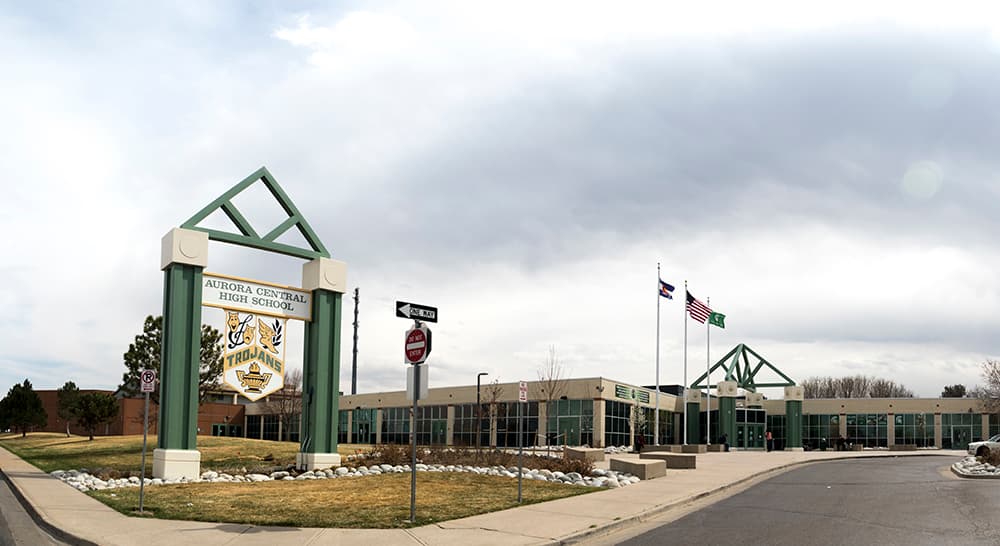
By Nic Garcia, Chalkbeat
More than 140 Colorado public schools received one of the state’s two lowest quality ratings Wednesday, putting them at risk of state intervention if they do not improve student learning fast enough.
There are more than 1,700 schools in Colorado, so the vast majority of the state’s students attend schools that received one of the state’s two highest ratings, the state education department said after the State Board of Education approved the ratings.
All public schools annually receive a rating, known as the School Performance Framework report, based largely on results from student scores on the state’s English and math tests. The factor that carries the most weight is student growth, or data that tracks how much students learn year-to-year compared to peers with similar results on state tests. Other factors include high school graduation and dropout rates.
There are four ratings: performance (the highest), improvement, priority improvement and turnaround (the lowest). Schools also may receive one of two designations if they did not have enough students take a test to generate a quality rating.
Schools that receive the state’s lowest ratings are put on the so-called “accountability clock.” Schools that do not improve within five years receive a state-ordered school improvement plan — which could include turning schools over to independent operators or granting schools increased autonomy — aimed at boosting student performance.
Seven schools that received one of the two lowest ratings this year already are on such improvement plans. Earlier this year was the first time under Colorado’s current accountability system that state officials mandated changes to raise student performance.
“I know how much hard work it takes by school leaders, teachers, parents and students to lift performance enough to come off the state’s accountability clock,” Education Commissioner Katy Anthes said in a statement. “But this work is absolutely critical for students, so I’m very pleased to see that 98 schools came off the (accountability) clock this year. As a department, we will increase our focus on supporting schools needing improvements, so more of them raise and maintain their students’ performance.”
Two schools will face state intervention next year: Manaugh Elementary in the Montezuma-Cortez school district and Martinez Elementary in the Greeley school district.
Four schools have just one more year to improve test scores or face the state board in 2019: Minnequa Elementary in Pueblo, Central Elementary in Commerce City, Paris Elementary in Aurora and Kepner Middle in Denver.
Here are some other details about this year’s quality ratings, according to the state education department:
- About 87 percent of charter schools earned the two highest ratings.
- Forty-five percent of the of the state’s 40 online schools received the state’s highest ratings, compared to 88 percent of non-online schools.
- The majority of all schools, 66.6 percent or 1,131 schools, received the same rating they did in 2016.
- Fourteen percent of schools improved by at one or more ratings levels.
- The same percentage of schools dropped one or more levels.
In response to a large number of students skipping state tests, which adds uncertainty to the quality ratings, the education department last year begun flagging schools that had fewer than 95 percent of students take the state’s tests.
More than 500 schools received their plan ratings with a “low participation” description due to participation rates lower than 95 percent on two or more subject areas, including students with parental excusals.
This year, the department added the descriptor “meets participation” to ratings for those schools and districts that had above 95 percent participation rates on assessments in two or more content areas.
Thirty-two schools had their final ratings decreased because too few students took the state’s tests. Those students did not receive formal excusals by their parents.
Twenty-three schools received a rating of “insufficient state data” because the number of students was too small to complete the necessary accountability requirements or the data included did not necessarily represent all students in the school.
Some board members used Wednesday’s meeting to reiterate calls for shorter and different tests in the hopes to win over families who have skipped the state’s tests in recent years.
“I believe in accountability. I believe in assessments that allow us to compare,” said board member Pam Mazanec, a Larkspur Republican. “I’d like to see an assessment that parents can get behind and feel good about.”
The education department is working with multinational textbook publisher and test maker Pearson to design such tests that should be rolled out in 2019.
Chalkbeat is a nonprofit news site covering educational change in public schools.











